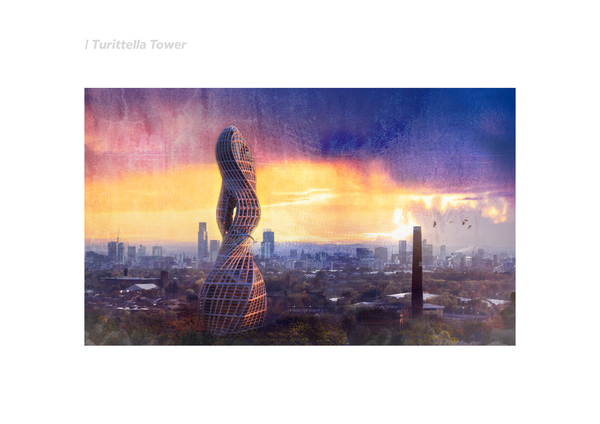This year’s work has been inspired by D’Arcy W Thompson’s book “On Growth and Form”- the notorious study of how physical forces and mathematical laws affect natural selection. The author suggests the development of living organisms is subject to physical forces that determine their shape; they conform to simple mathematical laws that generate patterns, spirals and waves, and the topological rules of geometry. To express this concept, I believed it was only fitting to design my proposal by making use of parametricism, developing an initial concept inspired by the geometry and aesthetics of seashells, into an optimized form driven by environmental responses.
The Turittella Tower is designed with the user’s wellbeing in mind, utilising concepts such as biophilia to enrich the experience the workplace has to offer. The building has a mixed-use programme, featuring indoor gardens where people can work, unwind and socialize, encouraging interaction and proximity to nature in a post-pandemic climate. The exoskeleton weaves its perimeter in a web of flowing lines that laces to lateral bracing with structural support. The entire structure depicts as one continuous frame, while the interior floor plates sweep wide column-free spaces. Parametric elements were introduced in the interior design of the spaces as well. A billowing ceiling is intended to transform the typical office into a more dynamic setting, while the garden’s canopy provides shade and compartmentation, without evidently diving the space.
Making Atelier allowed me to find a balance between the freedom of exploring abstract concepts and the technical knowledge needed to find innovative and complex structural strategies that would enable the success of our concepts. I believe that as architects we should aim to design buildings inspired by the natural realm, adapt their design to the environment they are built in, and utilize practices that promote wellbeing, sustainability, and technological novelty.


